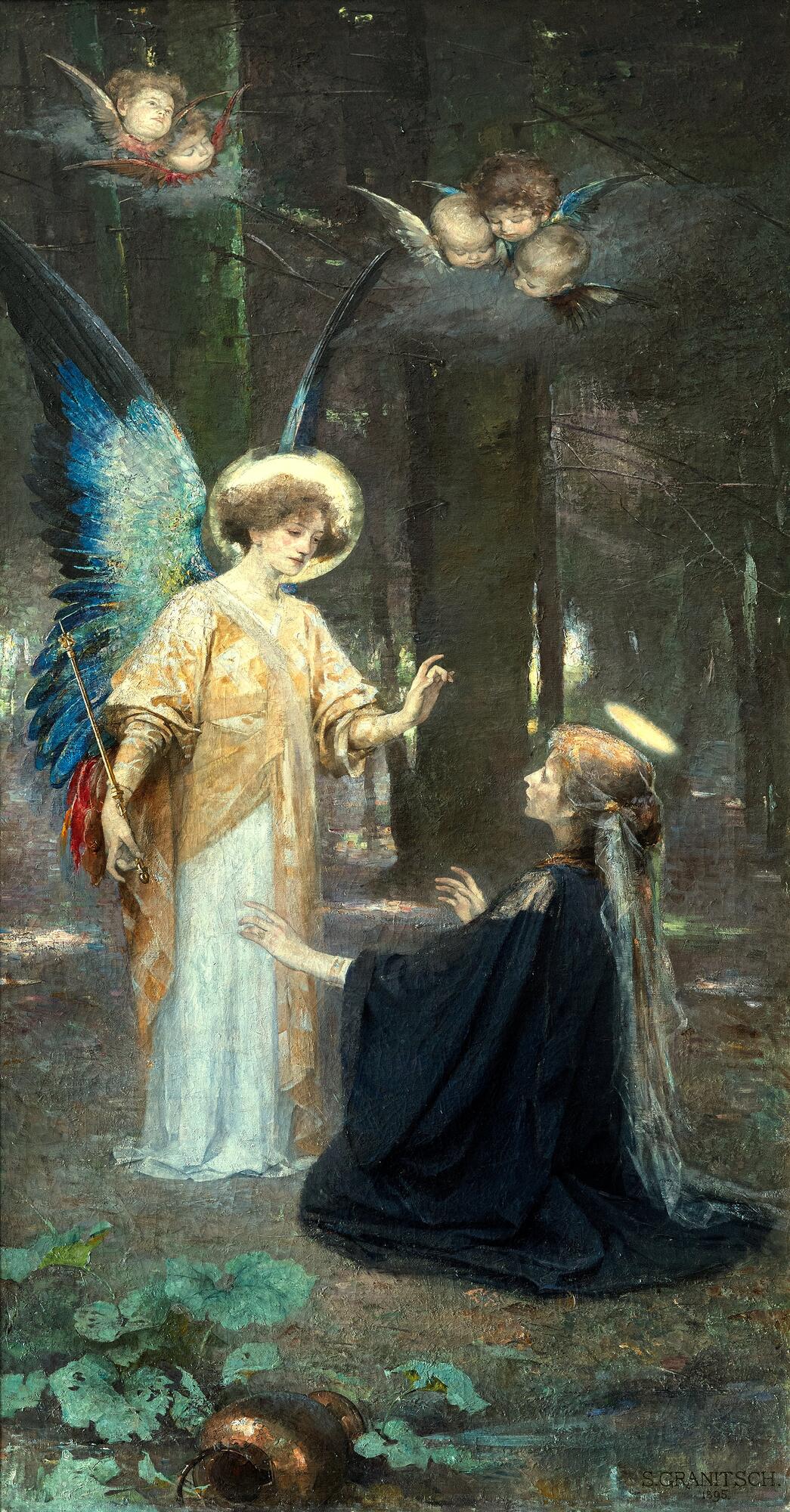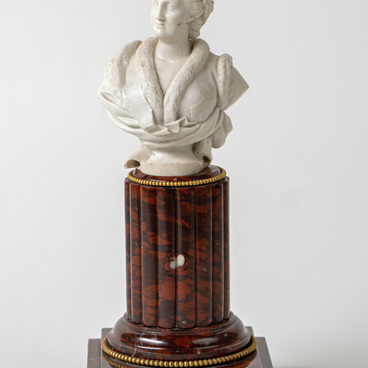Among other paintings that Empress Alexandra Feodorovna placed in the Palisander Drawing Room of the Alexander Palace was “The Annunciation”, based on a Gospel story.
The creator of the painting is the Austrian artist Suzanne Renate Granitsch. From 1885, she studied at the Vienna School of Applied Arts, where she was admitted after applying under a male pseudonym. In 1888 and 1892, the artist made several study trips to Munich. Under the tutelage of Karl Karger, she created a tile painting entitled “Tending the Garden” and worked on the decoration of the dining room and staircase at Neubruck Castle in Lower Austria. Later, together with other Austrian artists, Susanne Granitsch founded the group “Eight Women Artists”. The group brought together painters, graphic artists, and sculptors to create joint exhibitions. The main objective of this artistic association was to create a professional union of women artists in the cultural space of the Austro-Hungarian Empire.
“The Annunciation” is one of the paintings purchased by the imperial couple specifically for the Alexander Palace. As a young married couple, Alexandra Feodorovna and Nicholas II attended art exhibitions and purchased works they liked to decorate the interiors of the Alexander Palace, their cozy and beloved home.
This painting depicts the famous Gospel story — the Archangel Gabriel announcing to the Virgin Mary that Jesus Christ will be born of her in the flesh. The Archangel, with his wings shimmering in rainbow colors, stands before the kneeling Mary.
The painting was evacuated from the Alexander Palace in 1941 and survived the war. The luxurious frame was lost. It had the inscription on the lower listel AVE MARIA GRAZIA PLENA (“Hail Mary, full of grace” — the words with which the Archangel addressed Mary). In 2020, while preparing the exhibition of the Imperial couple’s private rooms, the museum used photos from its collection taken in the 1930s to recreate the frame of the painting. The descriptions of the exhibits in the Inventory Book of Museum Items of 1939 also contributed to the recreation of the frame, indicating its dimensions, the material and the decorating technique. The reconstructed frame is made of two types of wood: beech and pine, the ornamentation is executed in the technique of mastic modeling.
The creator of the painting is the Austrian artist Suzanne Renate Granitsch. From 1885, she studied at the Vienna School of Applied Arts, where she was admitted after applying under a male pseudonym. In 1888 and 1892, the artist made several study trips to Munich. Under the tutelage of Karl Karger, she created a tile painting entitled “Tending the Garden” and worked on the decoration of the dining room and staircase at Neubruck Castle in Lower Austria. Later, together with other Austrian artists, Susanne Granitsch founded the group “Eight Women Artists”. The group brought together painters, graphic artists, and sculptors to create joint exhibitions. The main objective of this artistic association was to create a professional union of women artists in the cultural space of the Austro-Hungarian Empire.
“The Annunciation” is one of the paintings purchased by the imperial couple specifically for the Alexander Palace. As a young married couple, Alexandra Feodorovna and Nicholas II attended art exhibitions and purchased works they liked to decorate the interiors of the Alexander Palace, their cozy and beloved home.
This painting depicts the famous Gospel story — the Archangel Gabriel announcing to the Virgin Mary that Jesus Christ will be born of her in the flesh. The Archangel, with his wings shimmering in rainbow colors, stands before the kneeling Mary.
The painting was evacuated from the Alexander Palace in 1941 and survived the war. The luxurious frame was lost. It had the inscription on the lower listel AVE MARIA GRAZIA PLENA (“Hail Mary, full of grace” — the words with which the Archangel addressed Mary). In 2020, while preparing the exhibition of the Imperial couple’s private rooms, the museum used photos from its collection taken in the 1930s to recreate the frame of the painting. The descriptions of the exhibits in the Inventory Book of Museum Items of 1939 also contributed to the recreation of the frame, indicating its dimensions, the material and the decorating technique. The reconstructed frame is made of two types of wood: beech and pine, the ornamentation is executed in the technique of mastic modeling.


